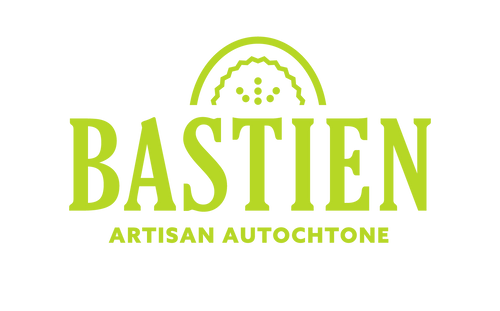Kwe!
In a world where countless cultures exist and coexist, it's natural to ask ourselves plenty of questions. We wonder how we can share these different cultures and traditions with each other, how we can appreciate them, and how we can use them without offending others.
The expression "cultural appropriation" is frequently misunderstood, misinterpreted and even frightening. People are worried that it will affect their freedom and prevent them from enjoying certain things, or sharing ideas and images they find inspiring.
As every culture has to be transmitted and shared with respect for others, we're going to tackle this delicate subject from various angles. These include authenticity, appropriation, appreciation and the actions everyone can do to appreciate another culture without making it their own. All in a spirit of reconciliation.
What's the definition of cultural authenticity?
Authenticity refers to the genuine, true, truthful nature of things. Authentic. In the context of indigenous cultures, the authenticity of an artwork, craft or other project is expressed in the approach, the craft process, the origin of the company and the individual creators, the people and organizations involved, etc.
For example, if we say a moccasin is indigenous, it means it's made by a First Nations, Métis or Inuit community, company and/or individual. The same goes for an artwork, an event or other cultural component. That's the authenticity of it all.
Sometimes, the authenticity of a product or service can be guaranteed by a label. Be careful, though, always ensure the accuracy of a label and remember to cross-check:
- Who awards it? Is it a cultural or community body?
- What are the requirements? Territory, origin of staff and artists, etc.
- What materials and processes are involved?
- And other relevant question
Indigenous labels of authenticity recognized in Quebec and Canada
In December 2021, the First Nations of Quebec and Labrador Economic Development Commission (FNQLEDC) has commissioned the design of a label, the yänionyen' (bear), to identify indigenous crafts from both Labrador and Quebec, and to serve as a label of authenticity.

The Bear is an official label that supports and protects local indigenous businesses, communities, artists and artisans, certifying their products and services as authentically indigenous.
To learn more about the bear's label, please visit First Nations Identification.
On a national level, the Indigenous Tourism Association of Canada (ITAC) has developed its own accreditation program throughout the country: The Original Original.

This label identifies businesses accredited not only for the authenticity of their products and services, but also for their compliance with the standards set by indigenous tourism organizations to deliver a quality experience.
Want to find out more about this accreditation? Visit ITAC's Original Original Program webpage.
What is cultural appropriation?
Cultural appropriation is when a person (or organization) uses the codes, elements, references, symbols, art, etc. of a culture to which he or she does not belong, without any sensitivity or consideration for their significance and importance to the people of that culture. This kind of approach is often taken from a privileged and majority perspective, with the intention of gaining advantages such as financial gain or notoriety, or even just for fun.
A typical example? On the occasion of the Indigenous History Month and/or a music festival, a fast-fashion company decides to produce and sell, without explanation or reflection, replicas of Indigenous clothing and accessories such as: oskwe’tra’ (traditional Wendat headdresses), ahchara’ (wampum necklaces) or arahchiou’ (moccasins).
And cultural appreciation?
This doesn't mean that, as a non-indigenous person, you don't have the right to wear arahchiou’ or other indigenous accessories.
On the contrary.
Indigenous artists, craftspeople and businesses who craft products are eager to share their culture and tradition with you, and want you to use and wear their creations. In these times of reconciliation with indigenous peoples, culture needs to be shared, broadcast and appreciated by everyone.

Cultural appreciation is the desire to discover, taste, touch, understand and listen to the culture of others. And to do so with understanding, respect, sensitive curiosity and humility, especially when you belong to the privileged segment of society, the majority culture.
How can we appreciate a culture, and its products, without making it our own?
With that in mind, our goal is not to prevent you from loving, buying, exhibiting or wearing crafts from other cultures. As indigenous people, we want you to buy our art, our crafts, our services.
This has been part of the economic development of First Nations since the earliest contacts with the European peoples. In addition, cultural, arts and crafts businesses enable indigenous people to maintain and preserve millennia of cultural know-how.
t's with these thoughts in mind that you simply have to enjoy other cultures in a way that's respectful, inclusive, comprehensive and aware of what product or service you're buying. To do this, before purchasing, using or doing anything else :
- Find out about the product's authenticity: for a product of indigenous origin, make sure it is manufactured, sold, distributed or performed by an indigenous business, person or community
- If there is a label of authenticity, verify that it is legitimate and has been granted by a community or a governing
- Learn more about the product or service you want, what it means to its community: what it's for, is it a symbol of colonialism or oppression, etc.
- Explore the culture and community that inspires you, ask questions to the people involved, with respect, humility and sincerity
- Learn about the right terms to use when talking about the product and its culture, and use them wisely
- Ask people involved in product development how to wear it, expose it and use it correctly and respectfully
- When you talk publicly about your purchase, never forget to name the community it came from, refer to the person or company that made it, and talk about what you've learned about it
- Avoid buying items that are sacred or that refer to oppression, colonization, stereotypes or clichés, and be aware of what you are buying
- Avoid using elements of another culture to gain advantages, money or notoriety
- Be aware of their importance to others and that they do not belong to you.
- Encourage the local community to get involved in your project and share some of the profits with them.
- Offer visibility in exchange for using certain symbols
- Validate your creations with the community that inspires you: in the case of indigenous communities, most of them have Elders' Circles, guardians of the culture
Most importantly: be sincere and humble in your approach, because you're carrying and using the history and work of people from another culture. Ask yourself questions, and ask those around you. Respect and good faith are the key to authentic, equitable and respectful cultural sharing.
Want to find out more?
Want to dig a little deeper into the subject of cultural appropriation? Below are a few articles and studies that might interest you:
- What is Cultural Appropriation? - Canadian crafts association
- Understanding Cultural Appropriation - Proudly Indigenous Crafts & Designs
- Appropriation culturelle : de quoi parle-t-ton? - L'état du Québec 2020
Tiawenhk, entïio' chia' önenh!
Wendat words of the day





